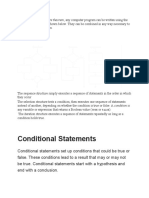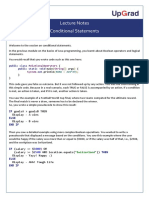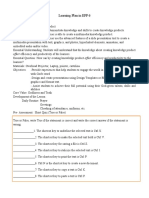0% found this document useful (0 votes)
21 views12 pagesDay 6 - Controls Statement in Java
The document provides a comprehensive guide to conditional statements and operators in Java, emphasizing their importance in decision-making within code. It covers various types of conditional statements, including 'if', 'if-else', 'if-else-if' ladders, and 'switch' statements, along with examples and syntax for each. Additionally, it introduces the ternary operator as a shorthand for simple if-else statements, facilitating quick decision-making.
Uploaded by
aligangajake10.3Copyright
© © All Rights Reserved
We take content rights seriously. If you suspect this is your content, claim it here.
Available Formats
Download as PDF, TXT or read online on Scribd
0% found this document useful (0 votes)
21 views12 pagesDay 6 - Controls Statement in Java
The document provides a comprehensive guide to conditional statements and operators in Java, emphasizing their importance in decision-making within code. It covers various types of conditional statements, including 'if', 'if-else', 'if-else-if' ladders, and 'switch' statements, along with examples and syntax for each. Additionally, it introduces the ternary operator as a shorthand for simple if-else statements, facilitating quick decision-making.
Uploaded by
aligangajake10.3Copyright
© © All Rights Reserved
We take content rights seriously. If you suspect this is your content, claim it here.
Available Formats
Download as PDF, TXT or read online on Scribd
/ 12
























































































